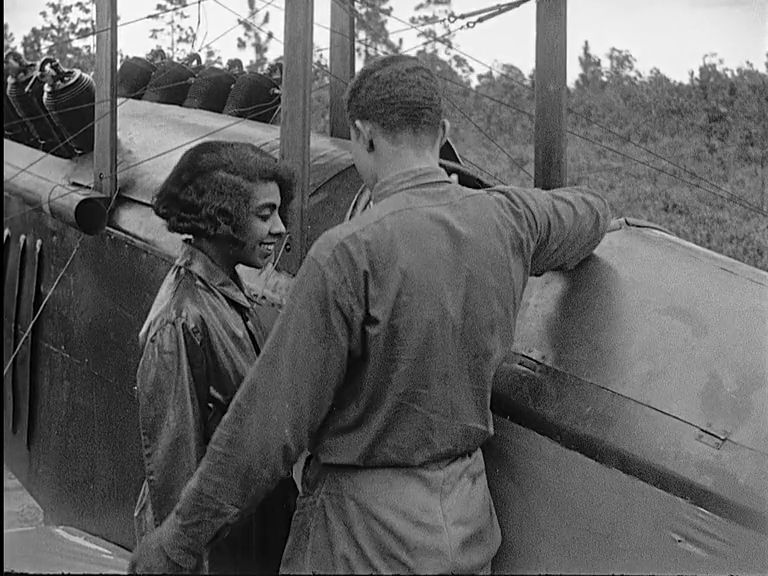
By Barbara Wingo
Many of our members and friends have commented on the appearance of a brief glimpse of Richard Norman’s The Flying Ace in the recent motion picture version of The Color Purple. Others have noticed – and noticed the centrality of this reference.
Time magazine reviewer Stephanie Zacharek notes that there is “a small but important nugget of movie history wrapped in the vibrant finery of Ghanaian director Blitz Bazawules’s movie” of The Color Purple:
Roughly midway through, two of the movie’s central characters – Fantasia Barrino’s Celie, an abused wife who’s slowly reclaiming her sense of self, and the woman she’s fallen for, Taraji P. Henson’s sultry Jazz Age juke-joint singer Shug Avery – drive from the country to a movie palace in the city. The feature they see there, advertised in lights, is The Flying Ace; splashed across its poster are the words “with an all-colored cast.” The Flying Ace, released in 1926 and directed by Richard E. Norman is a real movie. It was a part of what was known at the time as a race film: if America’s segregation and racism meant that Black citizens were largely shut out of Hollywood, African Americans would build their own world of sophisticated entertainment creating spaces for their own performers to flourish. Some 100 years later, those spaces still need to be carved out, and that’s what Bazawule . . . has done.
In a less favorable review Keith Uhlich in Slant Magazine nonetheless points out:
In a scene unique to this version of the story, Shug and Celie go to see The Flying Ace, an actual silent film from 1926, and one of the few surviving productions of the time with an all-African-American cast. As Shug and Celie watch the movie, they imagine themselves within it—the screen becoming both door and mirror as they sign and dance their way toward a liberating kiss. It’s an inspired way to engage with the ongoing debates about cinematic representation while still being fully uplifting and entertaining. And it’s one of the few times that Bazawule’s Color Purple stakes out bold new territory instead of fawningly emulating what came before.
Whatever one may decide about this version of The Color Purple – clearly the inclusion of The Flying Ace segment was not just an historical nod (although that is important), but rather an important part of the story’s development and a lesson for today.

